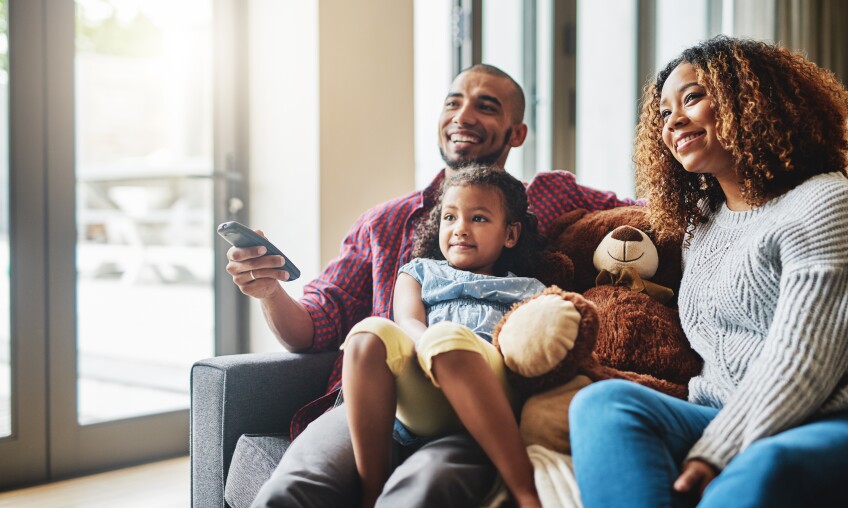How Much is Too Much? Making the Most of Kids’ Screen Time

It is late in the afternoon, and you are trying to make dinner, talk on a conference call and juggle your preschooler. Searching for something to keep your child’s interest, you head over to the television to stream an episode of “Dinosaur Train” that will keep their attention focused.
We engage with screen time for education, recreation and communication with faraway family and friends and use television, video-on-demand, video calls, virtual learning apps and tablets quite a bit. And if you are like me, you are wondering — how much is too much?
Information from psychologists, pediatricians, educational organizations and teachers in the field help guide caregivers on best practices for screen time during the pandemic. As an education consultant, I have the privilege to hear from hundreds of caregivers and educators across the country. And often, their questions are the same. Curated from interviews with colleagues and experts in the field, published studies and professional guidelines, here are answers to many of our frequently asked questions regarding screen time.
Our use of screens has significantly increased. Is this a bad thing?
While the American Academy of Pediatricsrecommends less than one hour of recreational screen time for children under the age of 2 and up to one hour of high-quality content for children 2 to 5 years old, it has updated its guidelines since the start of the pandemic. Its statement acknowledged that screen time would increase across the board and suggests we begin to shift our thinking from the amount of time spent watching (quantity) to what we are watching (quality).
Does what my preschooler watch make a difference?
You have control over what your children watch and play on screens, and what you select will make a difference. Common Sense Media, a nonprofit organization that provides education and advocates for families to promote safe technology and media for children, stresses the importance of screen quality over screen time. For example, engaging in a live phone call with a family member or playing on a high-quality education app will provide a different experience compared to passively watching a fast-paced cartoon.
So where can I find high-quality, bilingual age-appropriate content?
The amount of digital content available at our fingertips can be overwhelming. There is also a fear of exposure to unwanted and inappropriate ads, banners and pop-ups. Thankfully, there are many tools to help adults evaluate content for children and sources of high-quality digital content. Many are ad-free and available in both English and Spanish. Here are a few of them.
- Common Sense Media provides trusted reviews and suggestions of shows, movies, apps, games and books so caregivers can be sure content is appropriate for the little ones in their care.
- PBS KIDS series like “Daniel Tiger’s Neighborhood,” “Curious George” and “Sesame Street” are often recommended by the American Academy of Pediatrics because of their high quality and educational content. There are also many PBS KIDS apps and online games available for many shows.
- PBS LearningMedia provides videos and activities for students, often in both English and Spanish.
- Los Angeles Public Library’s Kids Path provides free, high-quality content in their e-media, digital content and virtual storytimes.
In addition to selecting high-quality content, what can I do to make screen time even more valuable?
There are great ways to use technology to connect with your children and expand on their learning. You might consider some of these approaches in your own home to make screen time only one aspect of family engagement.
Create a family media plan. Every family is unique and is experiencing the pandemic differently. The American Academy of Pediatrics recommends establishing a personalized Family Media Plan (available in English and Spanish) to balance children’s online and offline lives. Create this plan with your children. If they feel like they have a say in developing the family plan, it might increase how much they buy into it.
Talk about it. While it is always best to watch with your children, that is not always possible. So what can you do to make their screen time alone as educational as possible? Talking with your child about their favorite show helps build their language, literacy and social-emotional skills. At the end of an episode, ask your child some simple questions to start a conversation such as:
- “What happened in that episode?”
- “How did the characters deal with the problem?”
- “What was the funniest part?”
- “Did anything happen that made you feel scared/happy/brave?”
- “If you were going to change the end of the episode/game, how would you make it different?”
Find a balance. There are many opportunities for us to expand on learning after screen time. As PBS Parenting Minutes suggests in their“Making TV Time Learning Time'' video, it’s a good idea to try to tie in themes of what children are watching on TV to real-world examples. You can also create a book together based on the characters, or put on a play. Whatever you decide to do, get creative and bring the themes and characters to life after turning off the power button.
Can online school, video calls and educational use of screens have physical side effects on my child?
Last December, the American Academy of Pediatrics presented findings of the effects of screen time on children’s eyes. It found that while an increase in screen interaction can cause eye strain, we can help our children by building in breaks. According to pediatric ophthalmologist Geoffrey Bradford, “there’s no need to worry about educational screen time during the pandemic if you arrange breaks between assignments, encourage outdoor play whenever safe and limit daily entertainment screen time to two hours a day or less.”
Even if you’re worried about screen time, it’s good to remember that using it in a planned, monitored way can be a great way to boost early math and literacy skills for your children while we stay at home. And even if it’s not perfectly planned and monitored, you’re doing the best you can and it’s more than enough!


